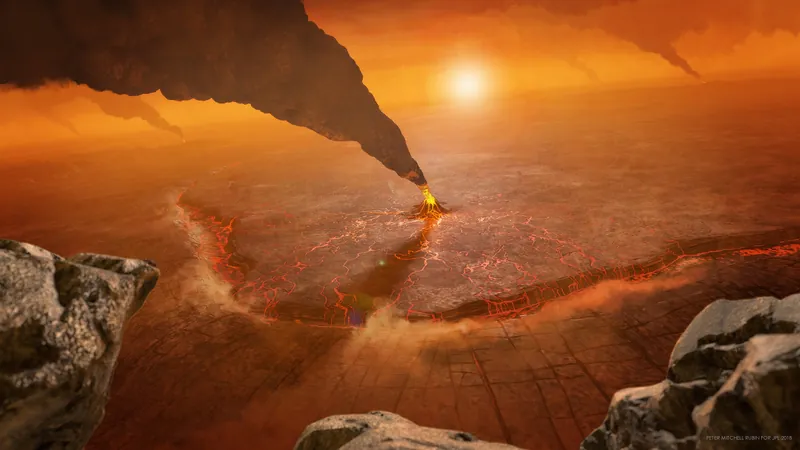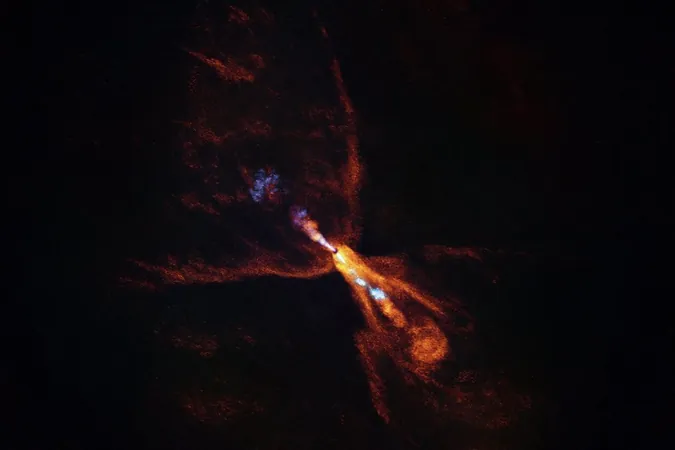
Revolutionary Findings on Venus: Magellan Data Unveils Tectonic Secrets!
2025-05-25
Author: Benjamin
NASA's Magellan Mission: Unearthing Venusian Mysteries
More than three decades after its mission ended, NASA’s Magellan spacecraft has resurfaced in the limelight, offering groundbreaking insights into the tectonic processes occurring on the enigmatic planet Venus. Through an exhaustive analysis of gravity and topographical data, scientists have delved into the formation of large, circular geological formations known as coronae, aiming to decode the planet’s geological activity.
Venus vs. Earth: A Tale of Two Worlds!
Often referred to as 'twin planets' due to their similar sizes and compositions, Venus and Earth take dramatically different paths when it comes to surface renewal. Earth’s surface is constantly reshaped by plate tectonics, a process absent on Venus. Instead, Venus experiences surface renewal through other geological processes like volcanism, recently identified with the help of Magellan's historical data.
The Secrets of Coronae Revealed!
Leading the study, Gael Cascioli from the University of Maryland noted that coronae, while currently absent on Earth, may have once existed in its youth before the advent of plate tectonics. This new research shines a spotlight on the hidden forces under Venus’s crust, offering fresh perspectives on ongoing geological processes.
The Plume Mystery: What’s Beneath the Surface?
Coronae form when buoyant material from Venus's mantle pushes through to the surface, resulting in varied shapes and sizes that range from 60 km to a whopping 2,500 km across. Researchers are now investigating four scenarios in which these heat-driven plumes interact with the lithosphere, the outer layer of the planet. Two of these scenarios, known as lithospheric dripping and subduction, suggest that Venus is actively recycling its crust.
Cutting-Edge Technology: Modeling Venus’s Geology!
Using advanced 3D modeling techniques, the researchers compared their findings with the gravity data gathered by Magellan. Their algorithm helped identify active coronae among 75 examined formations, revealing that 52 have ongoing geological processes at play.
A Glimpse into Earth’s Early History?
Coauthor Anna Gülcher emphasized the significance of their findings: these active geological processes on Venus could mirror those from Earth's formative years. As scientists forge ahead, they hope to unlock even greater mysteries of our neighboring planet.
What’s Next? Future Missions to Venus!
The recent study only scratched the surface, as it analyzed just 75 out of 740 known coronae due to limitations in Magellan's data resolution. However, the future looks bright! Upcoming missions like NASA’s VERITAS and the European Space Agency's EnVision are set to provide unprecedented gravity maps of Venus. Researchers estimate that VERITAS will allow for detailed studies of 427 coronae, revolutionizing our understanding of Venusian geology and its implications for early Earth.
Revolutionizing Our Understanding of Venus!
As stated by study coauthor Suzanne Smrekar, VERITAS’s advanced gravity maps could enhance the resolution by two to four times, paving the way for discoveries that will transform our knowledge of both Venus and Earth. This exhilarating journey into the depths of Venus's geology promises to yield revelations that could reshape our understanding of planetary evolution.
Conclusion: The Legacy of Magellan Lives On!
The legacy of the Magellan mission continues to thrive, even over 30 years since its launch in May 1989. As researchers break new ground with ancient data, they open doors to the wonders that Venus may still hold.









 Brasil (PT)
Brasil (PT)
 Canada (EN)
Canada (EN)
 Chile (ES)
Chile (ES)
 Česko (CS)
Česko (CS)
 대한민국 (KO)
대한민국 (KO)
 España (ES)
España (ES)
 France (FR)
France (FR)
 Hong Kong (EN)
Hong Kong (EN)
 Italia (IT)
Italia (IT)
 日本 (JA)
日本 (JA)
 Magyarország (HU)
Magyarország (HU)
 Norge (NO)
Norge (NO)
 Polska (PL)
Polska (PL)
 Schweiz (DE)
Schweiz (DE)
 Singapore (EN)
Singapore (EN)
 Sverige (SV)
Sverige (SV)
 Suomi (FI)
Suomi (FI)
 Türkiye (TR)
Türkiye (TR)
 الإمارات العربية المتحدة (AR)
الإمارات العربية المتحدة (AR)